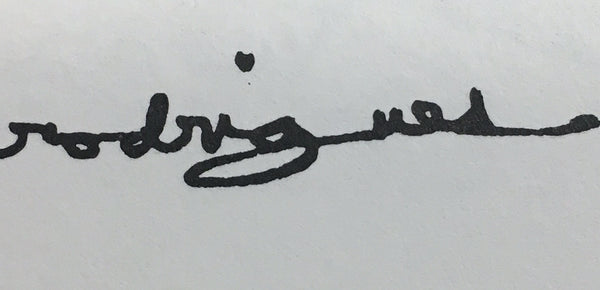One afternoon, while I was writing a Beatles article for Goldmine magazine, I started to ponder the issue of the world’s most important and influential rock bands. These are the bands that had the most enormous musical, commercial, and sociological impact on my life, have the greatest ratio of memorable songs per album release, and, I believe, the greatest impact to the worldwide baby boomer, Woodstock generation.
Now, the arrogance in my conclusion is justified (so say I!) because of my age and the real time rock ‘n’ roll experiences that I lived through and also took part in.
I urge you, however, to get to the end of this essay before you arm yourself behind your keyboard to rail and argue, for or against, my conclusion.
Here goes nothin’…
That afternoon, I started to reflect on the world’s greatest bands and this is what came pouring out of me:
The Beatles (number 1 selling album artist in US history
Led Zeppelin (number 3 selling album artist in US history)
The Rolling Stones
The Who
Pink Floyd
A veritable Mt. Rushmore of Rock.
Each band, in my mind, a perfectly formed and enclosed entity.
Each band very very different.
Each band has had enormous commercial success, world wide recognition, and at least 50 years of impact which led to the influence of thousands of musicians.
But wait…
Why were no American bands on that list?
This didn’t happen by conscious choice. This list also wasn’t created to reflect my current personal taste either. I haven’t deliberately listened to Led Zeppelin in years!
This also didn’t happen because I don’t love American bands.
After all, I have loved, among others, The Byrds, The Doors, Love, The Buffalo Springfield, Moby Grape, The Grateful Dead, Velvet Underground, Creedence Clearwater, Aerosmith, R.E.M., etc.
But…
None of these bands have the longevity, the gravitas, the world wide impact and, most importantly, the influence level of the British bands. Sorry.
This conclusion really started to weigh on me.
C’mon John, there has to be an American band or two that should be on this “Greatest Bands in the World” list of mine.
Isn’t it true, I said to myself, the Eagles (I have most of their albums, know most of their songs—Twisted Sister actually used to perform “Victim of Love”) have the single biggest selling album in the history of US album sales??
The Eagles surely have lasted 45 years, and everyone knows their songs.
I have even seen them on several occasions because friends wanted to go and my suggestion is, even if you love them, is to buy a DVD and watch the show in the comfort of your living room as there is nothing they do live that resembles any kind of human experience…it’s like watching perfect sounding wax figures!
Hell, the reason why they didn’t make this list is that The Eagles (however successful) just never seemed to break through sociologically and never became a “lifestyle”.
They, to me, were the rock equivalent of ABBA!
I L-O-V-E ABBA, but no, ABBA and the Eagles were never great in the way the 5 great British bands were.
If there was a ”Guilty Pleasure” list then they, along with The Four Seasons, among others, would be on it but that is for another article…maybe.
But there are 2 American bands that almost make this list.
Yes. There were two for me:
The Beach Boys and The Band.
Both of these bands, to me, are world class by most measures— but there was a lingering feeling in my gut that they come to this list with asterisks.
The Beach Boys (who single-handedly gave those of us on the East Coast, a fantasy lifestyle image of the California Dream, therefore being sociologically impactful) were primarily a singles band prior to the release of Pet Sounds in 1966. Yes, they had lots of hit singles and dominated early to mid-sixties pop radio and pushed the Beatles to create Sgt. Pepper, but they never really were accepted by the coming FM radio, album-oriented tsunami that came to represent the main source of music accessibility, both here and abroad, to my generation. One also has to acknowledge the singular genius of Brian Wilson, who really deserves to be placed in the US Mt. Rushmore of rock ‘n’ roll.
The Band (for starters, Dylan’s backup band and who established the template for the currently titled “Americana” music genre), whose image looked the part of the ultimate hippie commune (read Woodstock) lifestyle, as much as I think they not only comprise a unit of players so uniquely spectacular that it is just about as perfect a unified multi-player creation as had ever been created, they didn’t sell boatloads of records— but without a doubt, if they didn’t exist then I doubt that the Eagles would have ever happened.
You see, that’s why they have asterisks, as do all the American bands. As great as many of them are/were, they all fell short of the requirements to make the list that I created.
Why? I asked myself. How could this be? I mean, look at what America has produced.
Elvis (2nd biggest selling solo record artist in US history)
Bob Dylan
Chuck Berry
Michael Jackson
Prince
Stevie Wonder
Paul Simon
Aretha Franklin
Garth Brooks (The number 1 selling US album solo artist in history) etc.
Whoa.
Wait a minute….these are not bands…these are all individuals.
A veritable Mt. Rushmore of commercial, artistic, and cultural impact.
And then…It hit me that the greatest difference between the US and the UK is a much bigger and broader example of the differences culturally that define the two countries.
The UK is a Socialist based society, America is an Individually focused society.
Think about this for a second.
When America creates certain bands based around individuals, we tend to focus on a single member (going back to the very first rock ‘n’ roll hit) and the bands names reflect it:
Bill Haley & The Comets
The Jimi Hendrix Experience
James Brown & His Famous Flames
Bruce Springsteen & the E Street Band
Tom Petty & The HeartBreakers
Bob Seger & The Silver Bullet Band
The J. Geils Band
The Steve Miller Band
Sly & The Family Stone
The Dave Matthews Band
Hootie & the Blowfish
Joan Jett & The Blackhearts
In short, England creates great bands.
The US creates (and focuses on) great individuals.
Are there exceptions??
Of course. That’s what makes this exercise fun.
The UK has some individual based bands like Elvis Costello & The Attractions, and for a time in the early sixties there was a tendency (fad to be exact) to name bands, however short lived, with a singular focus:
Gerry & The Pacemakers
Billy J. Kramer & The Dakotas
Wayne Fontana & The Mindbenders
Freddy & the Dreamers
Dave Clark 5
These examples, however, are very rare.
Also, the UK has produced a handful of solo mega international stars such as:
Elton John
David Bowie
Cat Stevens
Van Morrison
Adele
Rod Stewart, Eric Clapton, and Jeff Beck have interwoven their respective careers with involvement in very influential British bands and can therefore not be considered truly solo artists.
In general, however, it seems clear to me that the differences between what the 60-year history of rock ‘n’ roll has created, in terms of the cultural differences of the artists that most of us consider the musical foundation of our lives, is directly reflective of the way the respective societies have evolved.
In conclusion, when musicologists finally look back on the phenomenon of the rock ‘n’ roll era, they will inevitably conclude that the difference between the greatest contributions to the genre between the US and the UK is that:
The US gave us many great individuals, and the UK gave us many great bands.
The communal, i.e. socialist, UK vs. the Individual-based US.
Now, it’s your turn…





















